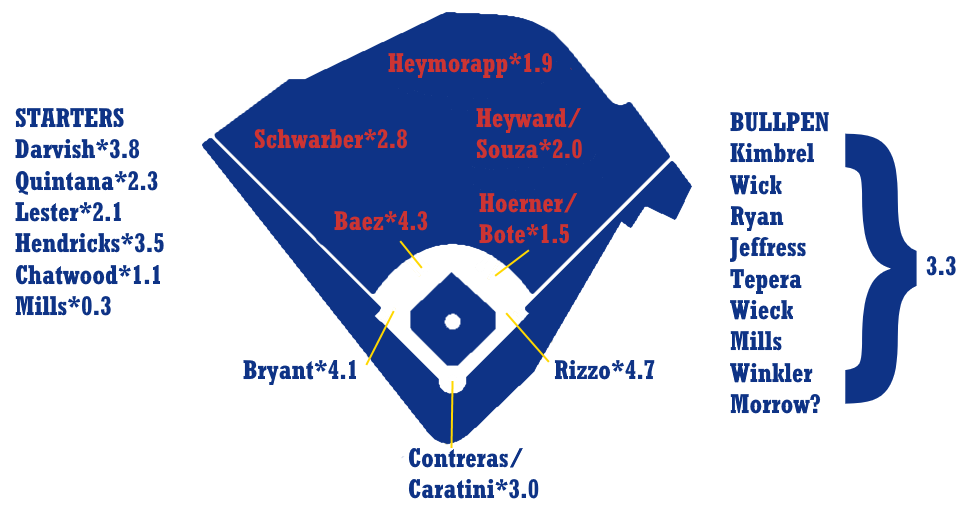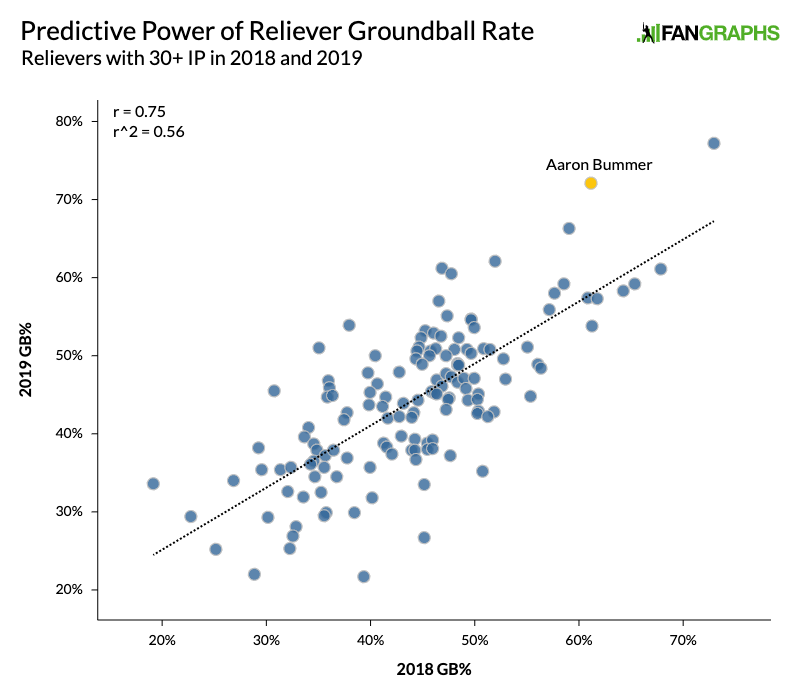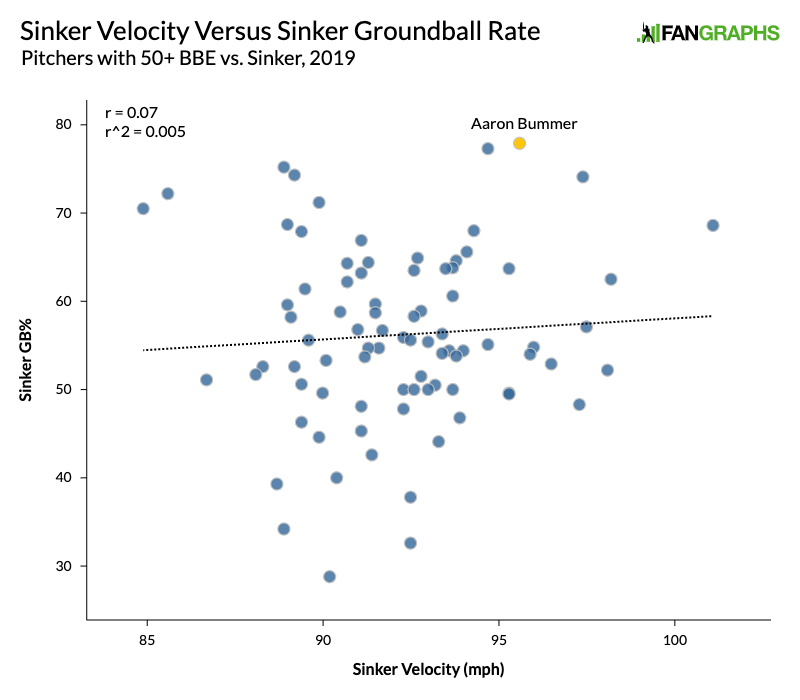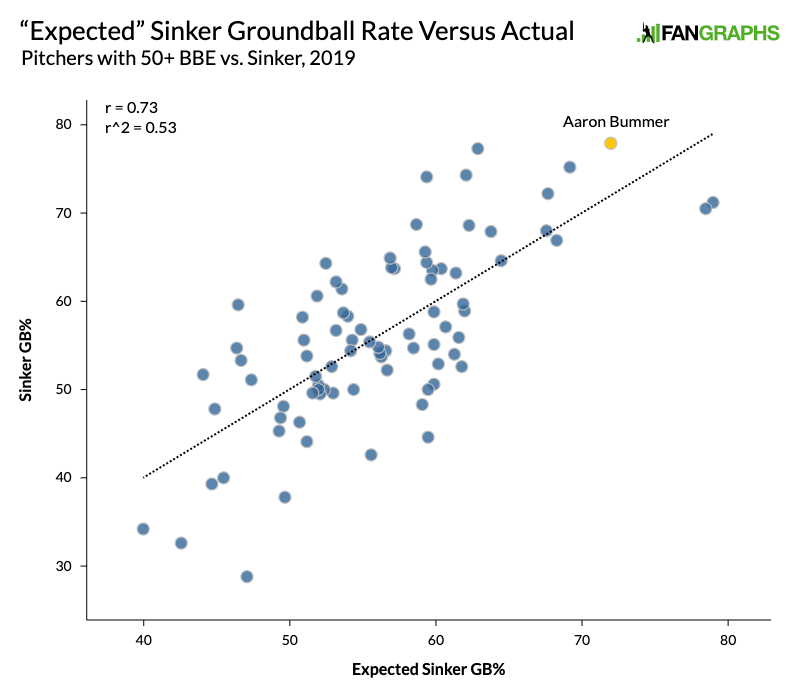One of the most exciting and maddening things about baseball is its unpredictability. A guy who fell to the 25th pick of his draft turns out to be the greatest player of his generation? Sure. A 36-year-old returns from a major achilles injury to have his best offensive season ever and hits the decisive home run of the World Series? Of course. One of baseball’s richest teams goes from winning the World Series to claiming it’s out of money, firing the guy who put the championship roster together, and trading away its superstar player to cut costs in the span of 18 months? That… well, we probably should have seen that coming.
Baseball is a game without sure things, which means the few precious certainties we get tend to stand out. One of those certainties, for the past five years, has been that if Zack Britton is pitching to you, he’s going to throw you a sinker. No need for guesswork, or a chess match, or an ear trained toward a nearby trash can. Since he switched from starting to relieving in 2014, 88% of the pitches Britton has thrown have been sinkers. Not a lot of pitchers can get by on just one pitch — so few, you can probably name them off the top of your head right now — but Britton’s been so successful, no one’s called it into question. That’s because the pitch every hitter knows is coming is still a 94 mph bowling ball thrown at their knees, and virtually no one can get a barrel to it. Because of that, Britton’s made 349 relief appearances, and owns a 1.81 ERA and 2.94 FIP over that span, with two All-Star selections and some MVP and Cy Young votes for his trouble. He’s one of the great relievers of his time, and it’s all because of one pitch.
That’s the Britton I know, you know, that everybody knows. Trouble is, that description might no longer be accurate. From 2014-18, Britton didn’t throw a non-sinker offering even 10% of the time over a given season. In 2019, however, he threw his breaking ball 13.6% of the time. That might sound like only a slight bump year-to-year, but this was no gradual change. This was Britton using the second half of 2019 to try something he’d never done before:

I’m being non-committal about what to call Britton’s breaking ball because there isn’t a consensus on what it is. Pitch Info calls it a curveball, while Statcast calls it a slider. You be the judge:
Whatever it is, it’s just about unhittable. In the 31 plate appearances Britton ended with the breaker in 2019, he allowed just one hit, one hit batter, and zero walks. Oh, and he got 25 strikeouts. That’s a wOBA of .051, a little better than his xwOBA of .095. That rate of success is astonishing, and it’s not out of line with what his numbers hinted at in smaller samples from previous seasons:
| Year | PA | AVG | OBP | SLG | K% | BB% | wOBA |
|---|---|---|---|---|---|---|---|
| 2014 | 21 | 0.050 | 0.095 | 0.050 | 61.9% | 0% | 0.077 |
| 2015 | 26 | 0.040 | 0.077 | 0.040 | 80.8% | 0% | 0.061 |
| 2016 | 14 | 0.214 | 0.214 | 0.357 | 50.0% | 0% | 0.240 |
| 2017 | 7 | 0.143 | 0.143 | 0.143 | 71.4% | 0% | 0.125 |
| 2018 | 14 | 0.071 | 0.071 | 0.071 | 50.0% | 0% | 0.063 |
| 2019 | 31 | 0.033 | 0.065 | 0.033 | 80.6% | 0% | 0.051 |
By itself, a plate appearance sample from any one of these seasons shouldn’t tell you much. Stacked together, though, they begin to paint a convincing picture. Britton has had another deadly weapon at his disposal all this time, and just hasn’t used it.
What makes the breaking ball so effective? Well, one theory you may already have considered is that hitters simply aren’t expecting it. Because he’s historically thrown sinkers on about nine out of every 10 pitches, hitters are going to try to sit on that pitch, knowing a surprise change of speed will be rare. There’s probably a good bit of truth to that. The other well-known one-pitch relievers, such as the four-seam-heavy Sean Doolittle and cutter specialist Kenley Jansen, also generate very good numbers with their secondary pitches in small samples. It can be difficult to know whether a pitch works well and is underused, or works well specifically because it is underused.
But even if you didn’t know how much or how little Britton was using his other pitches, an isolated look at the breaker alone would probably make you believe it could be a strong pitch. According to Statcast, it moves 7.6 inches above average vertically, the seventh-most vertical movement of any slider in baseball. Of the six pitchers ahead of him in that category, four of them — Tyler Duffey, Luke Jackson, Trent Thornton and Brett Anderson — all utilize the slider as one of their main weapons. Throw in the fact that Britton’s pitch also has above average horizontal movement, and the breaker looks the part of a dangerous offering, whether opposing hitters are expecting it or not. And Britton knows exactly where to throw it:

The timing of Britton’s increased trust in his breaking ball likely isn’t a coincidence, either. At the conclusion of June, Britton was three months into the three-year, $39-million contract he signed with the Yankees the previous offseason. His 2.55 ERA made him look like he was back to his old dominant self, the version that existed before a forearm strain and an achilles injury cost him big chunks of two seasons. But his 4.26 FIP was more foreboding. Because of the way Britton pitches — relatively few strikeouts, and lots of groundballs — he’s naturally a candidate to not only work a somewhat unflattering FIP, but also beat it. But this seemed different. His strikeout rate was lower than ever, his walk rate higher than ever, and his peripherals pointed to a real decline in effectiveness:
| Year | IP | ERA | FIP | K/9 | BB/9 | O-Contact% | SwStr% |
|---|---|---|---|---|---|---|---|
| 2016 | 67.0 | 0.54 | 1.94 | 9.94 | 2.42 | 42.0% | 17.2% |
| 2017 | 37.1 | 2.89 | 3.40 | 6.99 | 4.34 | 57.1% | 11.5% |
| 2018 | 40.2 | 3.10 | 4.22 | 7.52 | 4.65 | 48.8% | 12.5% |
| 2019 (thru 6-30) | 35.1 | 2.55 | 4.26 | 6.62 | 5.09 | 67.6% | 9.0% |
Obviously there are many components to pitching that aren’t included in this chart, but those don’t look like the numbers or the trajectory of someone who can be trusted to keep his ERA in the mid-2.00s. Britton and the Yankees could have just rode this out and waited for the other shoe to drop, but instead, the left-hander was proactive. In July, Britton threw the highest percentage of breaking balls of any month since September 2013, at 18.3%. In August, he surpassed that, going up to 19.9%. Then he did it again in September, going all the way up to 27.7% breaking balls. Britton was reinventing himself on the fly, and the results were stunning.
| Year | IP | ERA | FIP | K/9 | BB/9 | O-Contact% | SwStr% |
|---|---|---|---|---|---|---|---|
| 2016 | 67.0 | 0.54 | 1.94 | 9.94 | 2.42 | 42.0% | 17.2% |
| 2017 | 37.1 | 2.89 | 3.40 | 6.99 | 4.34 | 57.1% | 11.5% |
| 2018 | 40.2 | 3.10 | 4.22 | 7.52 | 4.65 | 48.8% | 12.5% |
| 2019 (thru 6-30) | 35.1 | 2.55 | 4.26 | 6.62 | 5.09 | 67.6% | 9.0% |
| 2019 (after 6-30) | 26.0 | 1.04 | 3.01 | 9.35 | 4.15 | 54.2% | 13.4% |
From the time Britton decided to increase his breaking ball usage, his numbers continuously improved until they returned to pretty close to the elite levels they once were. This is a pretty good visual of what that relationship looked like:

The more breaking balls he threw, the more effective he was. We’ve seen pitchers make adjustments like this and have success before, but Britton seems like a unique case. He wasn’t a struggling pitcher in his mid-20s who learned a new pitch and started dominating. He wasn’t a two-seam guy who got traded to a smart team that told him to throw more four-seamers up in the zone, and suddenly became a Cy Young candidate as a result. He was an overpowering reliever for several seasons, and could credit all of that success to a single pitch. Last year, that pitch stopped being enough, so at 32 years old, in the ninth year of his major league career, he pulled out a second pitch, and that turned out to be unstoppable too.
It’s still too early to see how far Britton might take this tweak in his repertoire, but if you’d like to know just how much trust he has in the breaking ball, look no further than the postseason. He stuck to the slider with 24.5% of the pitches he threw in October, and remained brilliant with it, with hitters going 0-for-6 with a sacrifice fly and four strikeouts. Here’s Nelson Cruz swinging at air:
Yordan Alvarez, helpless:
Carlos Correa, sure he’s not going to swing at this pitch that never touches the zone, and then doing it anyway:
And Alvarez again, possibly trying to foreshadow what the Astros PR department would look like in the coming weeks and months:
All of these hitters thought they knew Britton, and I bet you did, too. He’s the sinker demon, one of the best relievers of the last decade not in spite of being one-dimensional, but arguably because of it. He throws nothing but sinkers because that’s all he needs to beat you. But time marches on, and sooner or later, players usually end up needing to adjust, one way or another. Britton’s done that, and that makes him one of the most exciting relievers to pay attention to in 2020. He already once became one of the best pitchers in baseball when everyone knew what pitch was coming. What happens when they don’t?

 Sponsor Us on Patreon
Sponsor Us on Patreon Effectively Wild Wiki
Effectively Wild Wiki Twitter Account
Twitter Account Get Our Merch!
Get Our Merch!



